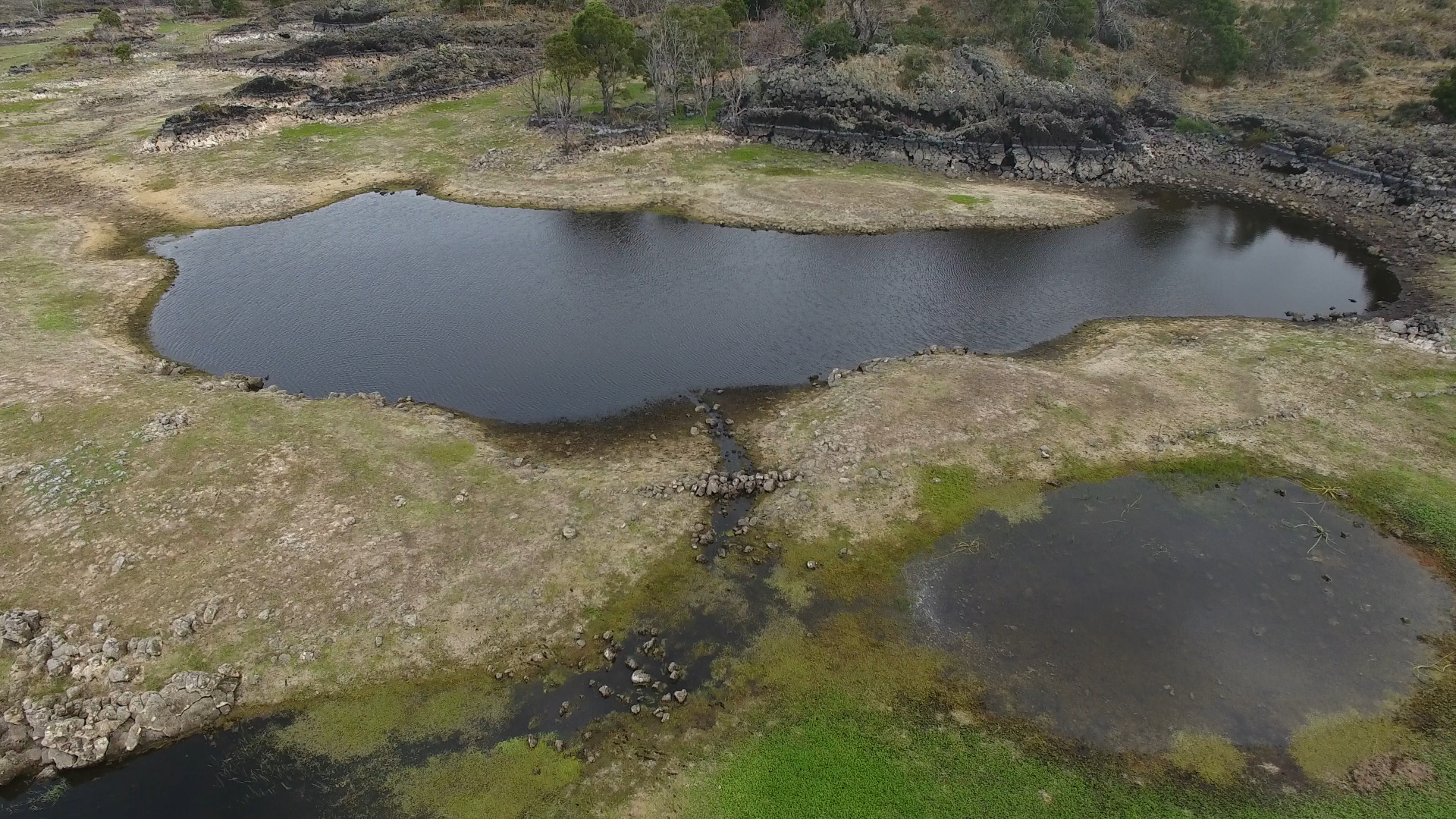

The Budj Bim Cultural Landscape is located within the traditional Country of Gunditjmara. As such, Gunditjmara have long-held rights, responsibilities and
obligations to care for Country based on continuing traditional and continuing Gunditjmara knowledge and practices.
Gunditjmara cultural traditions, knowledge and practices are evident in Gunditjmara aquaculture; as manifest in the changing practices of kooyang (eel) management, storage, harvesting and the associated manipulation, modification and management of water flows. Gunditjmara aquaculture knowledge and practices are also inclusive of sourcing grasses for the weaving of gnarraban (kooyang baskets), traditional representations of Gunditjmara aquaculture (for example, the complex designs produced on possum skin cloaks), adaptation of traditional catching techniques (for example, use of wire mesh baskets and wood crates for holding kooyang) and contemporary, creative artistic expressions of Gunditjmara aquaculture – evidenced in story-telling, dance, song, crafted objects and sculpture.
The assertion of Gunditjmara rights led to their recognition by Australia’s governments from the 1980s – the Aboriginal Land (Lake Condah and Framlingham Forest) Act 1987 (Vic.) was the first legislation recognise Gunditjmara and their rights.
Gunditjmara rights are recognised under the Australian Government’s Native Title Act 1993 and the Victorian Government’s Aboriginal Heritage Act 2006. Traditional and customary rights and obligations are implemented through governance arrangements.
- Ownership of the land is a key element to empower the exercise of customary and traditional rights and obligations.
- Asserting Gunditjmara identity and rights was essential in the fight to have them recognized by government.
- Within a Western colonial context, proving Gunditjmara rights and obligations to Country required engagement with research communities and technologies to ‘prove’ the existence and extend of ancestral knowledge and practices – and to have them recognized in Western terms.